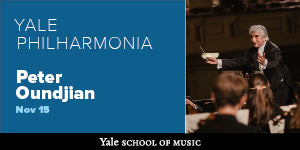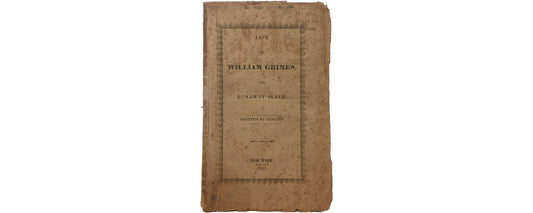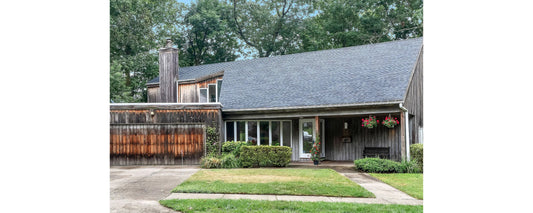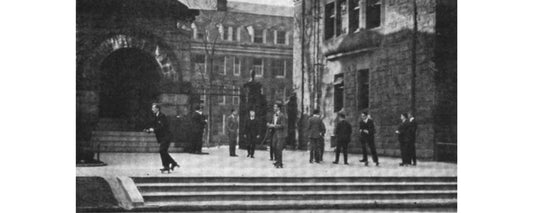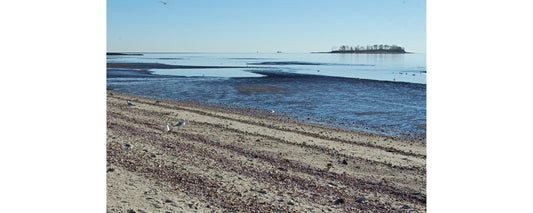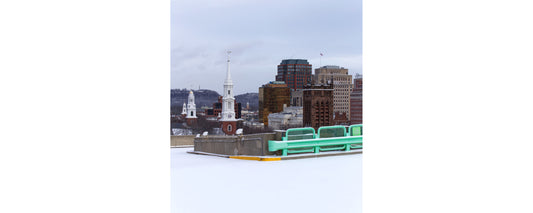New Haven’s street names evoke trees like Linden and Willow, institutions like Temple and Asylum, valuable things like a Bellevue, a Jewell, a Prospect, but none is more colorful than Orange Street.
Just how orange is Orange? Well, for starters, there’s plenty of orange to eat. Cheetos and Fritos, orange soda and orange juice are all easy to find. So are—no surprise—oranges, at P & M Fine Foods Orange Market and Nica’s Market. Chicken with Orange Flavor is on the menu at Hunan House, as are several orange-colored signature sauces at Tikkaway. You can take home a bottle of orange liqueur from Orange Street Liquor Shop or sip a spiced pumpkin latte at East Rock Coffee, which is housed in an Orange Street building but carries a Cottage Street address.
sponsored by
This time of year, pumpkins are in abundance not just in drinks but on stoops and porches up and down Orange Street, and canopies of orange maple leaves shade the pavement and complete the autumnal picture. Orange clothing is easy to spot here, too—hats, jackets, a Metro-North vest—and Euphoria Salon will dye your hair orange if you like.
Orange can be a thing of caution—cones, pylons, barrels, spray paint, the Don’t Walk hand—and a thing of beauty—impatiens in the window box of Christy’s Public House, arrangements of orange Gerber daisies and thistles at The Blossom Shop. Orange also evokes fire and heat. Along Orange Street, you can take a hot yoga class at True Bikram, located at Orange and Elm, or throw fireballs in Barcade’s old-school Mortal Kombat game. Barcade’s also got a penchant for orange beer, in flavor and color.
The edges of orange can be hard to discern: Where does yellow end and red begin? Is a school bus orange? How about the On High sculpture in Federal Plaza, viewed from between pillars on Orange? A sculpture of children frolicking outside the Connecticut Children’s Museum at the corner of Orange and Wall is more obviously orange—though it can also look brown in the right light. Inside the museum, open Fridays and Saturdays, children can visit a room straight from the classic book Goodnight Moon, which includes rhymes like “hush” and “mush,” but don’t expect a rhyme with “orange.”
In all honesty, Orange Street’s name has nothing to do with the color. According to the second edition of historian Doris B. Townshend’s The Streets of New Haven (1998), it was named for William of Orange—the same William for whom the College of William and Mary in Williamsburg, Virginia, is named. Mary was the daughter of King James II, who set out to revoke Connecticut’s charter in 1687, leading rebels to hide the document in what was ever after known as the Charter Oak. Two years later, when William of Orange deposed his Catholic father-in-law and ascended to the British throne, he recognized Connecticut’s charter. He and Mary, who ruled jointly until her death in 1694 (he remained king until he died in 1702), supported Protestant worship. Albeit not exclusively, so does Orange Street, home to Trinity Lutheran Church and St. John’s Episcopal Church.
Appropriately enough, Orange Street tops out at English Drive. One wonders what King William might have thought of his street crossing paths with Bishop, in light of the seven Anglican bishops who were imprisoned in the Tower of London by his father-in-law for sedition when they opposed his declaration extending religious freedom to Catholics. (They were later acquitted.) William’s street also meets Crown and Court, but one need not take the historical intersections too seriously. After all, there are also crossings like Orange-Canner and Orange-Grove.
One lane of Orange Street peels off onto I-91 about halfway down the street’s full length. If you follow Orange all the way south, it takes a jog at Crown, crosses George and squeezes through the Oak Street Connector and South Frontage Road (figuratively only—you can’t drive through) to become South Orange, ending abruptly at Columbus Avenue not far from Union Station, where you can hop a train and then a bus to Orange, New Jersey.
Orange you glad we have Orange Street?
Written by Kathy Leonard Czepiel. Images 1-4 photographed by Kathy Leonard Czepiel. Image 5 photographed by Dan Mims.


